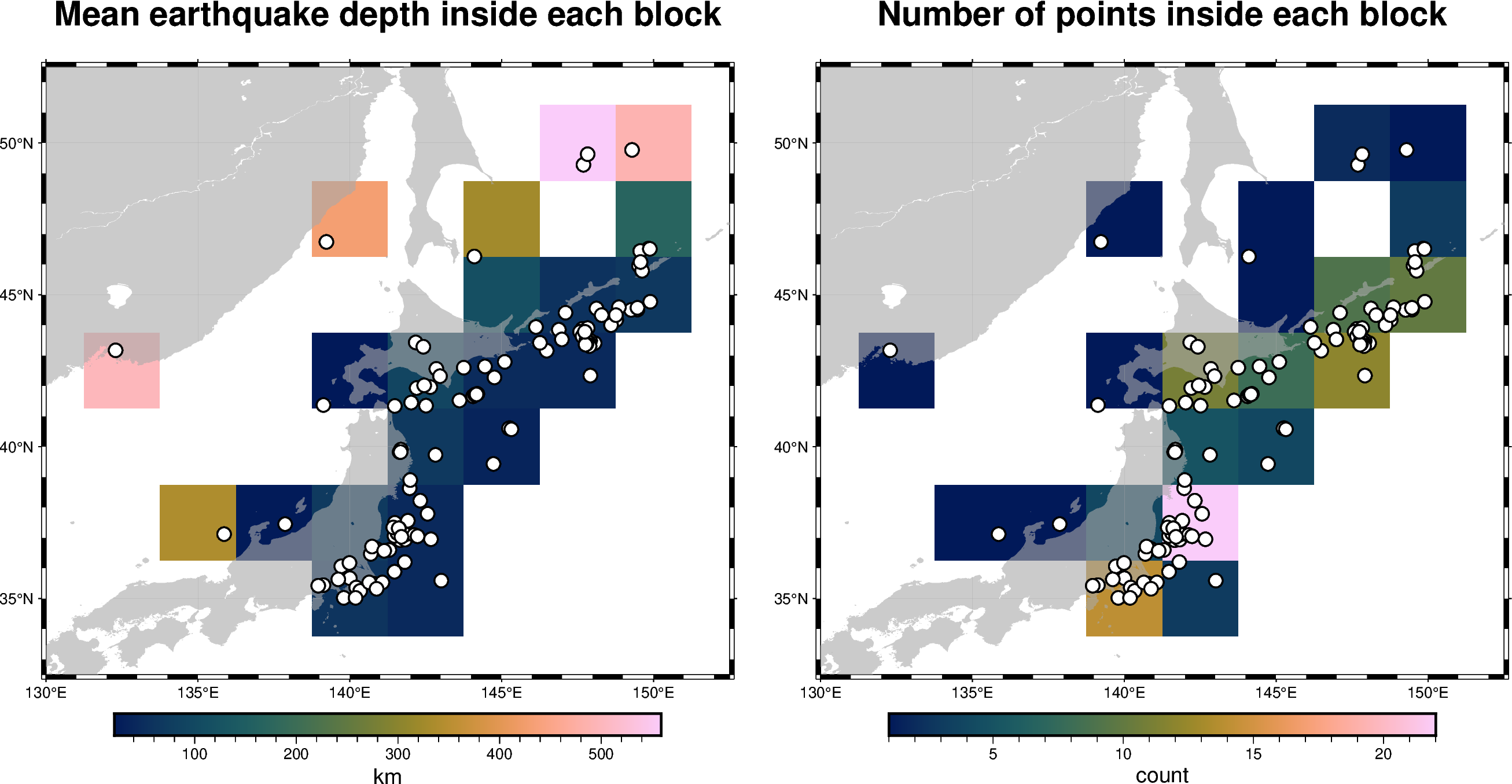Note
Click here to download the full example code
Blockmean
The pygmt.blockmean method calculates different quantities
inside blocks/bins whose dimensions are defined via the spacing parameter.
The following examples show how to calculate the averages of the given values
inside each bin and how to report the number of points inside each bin.

<IPython.core.display.Image object>
import pygmt
# Load sample data
data = pygmt.datasets.load_sample_data(name="japan_quakes")
# Select only needed columns
data = data[["longitude", "latitude", "depth_km"]]
# Set the region for the plot
region = [130, 152.5, 32.5, 52.5]
# Define spacing in x and y direction (150 by 150 minute blocks)
spacing = "150m"
fig = pygmt.Figure()
# Calculate mean depth in km from all events within 150x150 minute
# bins using blockmean
df = pygmt.blockmean(data=data, region=region, spacing=spacing)
# convert to grid
grd = pygmt.xyz2grd(data=df, region=region, spacing=spacing)
fig.grdimage(
grid=grd,
region=region,
frame=["af", "+tMean earthquake depth inside each block"],
cmap="batlow",
)
# plot slightly transparent landmasses on top
fig.coast(land="darkgray", transparency=40)
# plot original data points
fig.plot(
x=data.longitude, y=data.latitude, style="c0.3c", color="white", pen="1p,black"
)
fig.colorbar(frame=["x+lkm"])
fig.shift_origin(xshift="w+5c")
# Calculate number of total locations within 150x150 minute bins via
# blockmean's summary parameter
df = pygmt.blockmean(data=data, region=region, spacing=spacing, summary="n")
grd = pygmt.xyz2grd(data=df, region=region, spacing=spacing)
fig.grdimage(
grid=grd,
region=region,
frame=["af", "+tNumber of points inside each block"],
cmap="batlow",
)
fig.coast(land="darkgray", transparency=40)
fig.plot(
x=data.longitude, y=data.latitude, style="c0.3c", color="white", pen="1p,black"
)
fig.colorbar(frame=["x+lcount"])
fig.show()
Total running time of the script: ( 0 minutes 3.383 seconds)